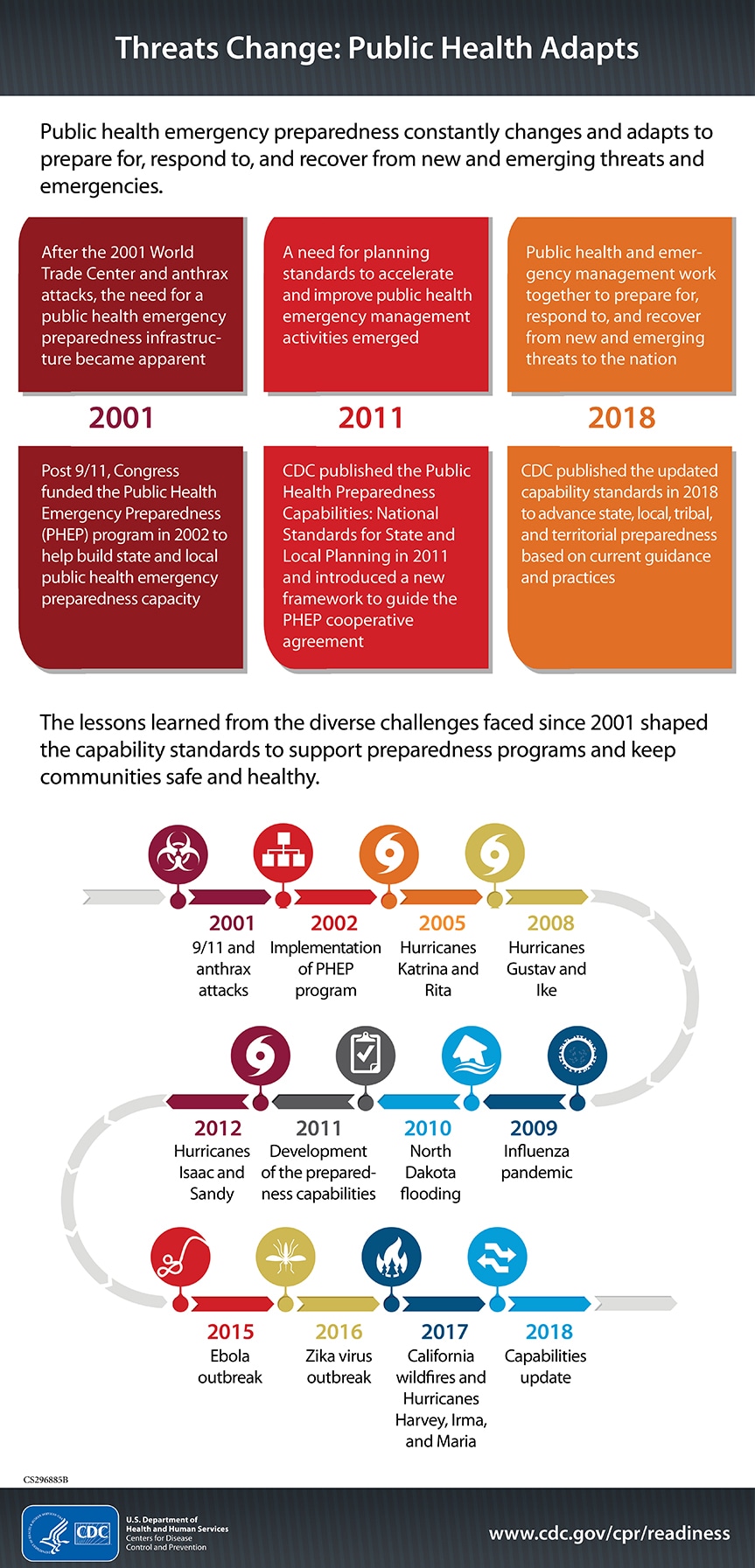Threats Change: Public Health Adapts Infographic
Threats Change: Public Health Adapts
Public health emergency preparedness constantly changes and adapts to prepare for, respond to, and recover from new and emerging threats and emergencies.
2001
- After the 2001 World Trade Center and anthrax attacks, the need for a public health emergency preparedness infrastructure became apparent
- Post 9/11, Congress funded the Public Health Emergency Preparedness (PHEP) program in 2002 to help build state and local public health emergency preparedness capacity
2011
- A need for planning standards to accelerate and improve public health emergency management activities emerged
- CDC published the Public Health Preparedness Capabilities: National Standards for State and Local Planning in 2011 and introduced a new framework to guide the PHEP cooperative agreement
2018
- Public health and emergency management work together to prepare for, respond to, and recover from new and emerging threats to the nation
- CDC published the updated capability standards in 2018 to advance state, local, tribal, and territorial preparedness based on current guidance and practices
The lessons learned from the diverse challenges faced since 2001 shaped the capability standards to support preparedness programs and keep communities safe and healthy.
2001 – 9/11 and anthrax attacks
2002 – Implementation of PHEP program
2005 – Hurricanes Katrina and Rita
2008 – Hurricanes Gustav and Ike
2009 – Influenza pandemic
2010 – North Dakota flooding
2011 – Development of the preparedness capabilities
2012 – Hurricanes Isaac and Sandy
2015 – Ebola outbreak
2016 – Zika virus outbreak
2017 – California wildfires and Hurricanes Harvey, Irma, and Maria
2018 – Capabilities update
